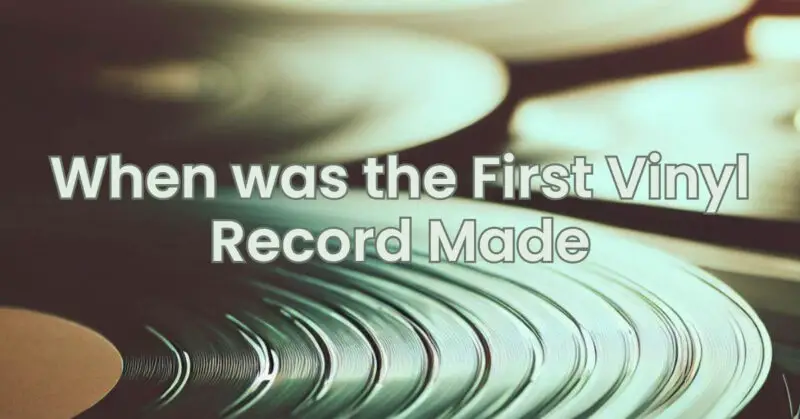Vinyl records have become iconic symbols of music appreciation, capturing the hearts of audiophiles and music enthusiasts worldwide. In this article, we delve into the fascinating history of vinyl records and explore the timeline of their creation, from the early experiments with recorded sound to the birth of the first vinyl record.
The Quest for Recorded Sound: The journey to create recorded sound began in the late 19th century with inventors and innovators striving to capture and reproduce audio. Several key milestones led to the development of vinyl records as we know them today.
Phonograph Cylinder Era: The earliest attempts to record sound led to the creation of the phonograph cylinder, invented by Thomas Edison in 1877. These cylinders were typically made of tin foil or wax-coated cardboard and featured grooves that captured sound waves. While not made of vinyl, these early cylinders marked the beginnings of recorded sound and paved the way for future advancements in audio technology.
Shellac Era: The first instance of vinyl’s use in audio playback can be traced back to the early 20th century. In 1901, Emile Berliner, a German-born inventor, introduced the Gramophone, which utilized flat discs made of a shellac compound. Shellac records quickly gained popularity due to their durability and improved sound quality compared to earlier recording formats. However, vinyl did not play a significant role during this era.
The Vinyl Revolution: The breakthrough moment for vinyl records came in the late 1930s and early 1940s. During this time, a team of researchers at Columbia Records, led by Dr. Peter Goldmark, developed a new material for records known as vinyl. Vinyl, specifically polyvinyl chloride (PVC), proved to be a superior material due to its durability, flexibility, and excellent sound quality.
The first vinyl record, commonly referred to as the “LP” or long-playing record, was introduced by Columbia Records in 1948. This record format played at 33 1/3 revolutions per minute (RPM) and featured microgrooves that allowed for longer playing times. The LP revolutionized the music industry by allowing for the playback of full-length albums on a single disc, expanding artistic possibilities for musicians and providing a more convenient listening experience for consumers.
It is important to note that while the first vinyl record was made in 1948, vinyl had been used in various other applications before then. For example, vinyl had been utilized in radio transcription discs, which were not intended for commercial use but played a role in the development of vinyl records.
Legacy and Evolution: The introduction of vinyl records marked a significant milestone in the history of audio playback. Vinyl quickly became the dominant format for music distribution, and its popularity continued to rise throughout the 1950s, 1960s, and beyond. The format went through various iterations, including the introduction of stereo sound, different record sizes (such as 7-inch singles and 12-inch albums), and advancements in manufacturing techniques.
Vinyl records enjoyed decades of success until the rise of digital formats in the late 20th century led to a decline in their popularity. However, in recent years, vinyl has experienced a remarkable resurgence, with renewed interest from music enthusiasts and a new generation of listeners appreciating the unique qualities of vinyl records.
The first vinyl record emerged in 1948, revolutionizing the music industry and shaping the way we experience recorded sound. From its humble beginnings in the era of phonograph cylinders to the introduction of shellac records, the evolution of vinyl records showcased the ongoing quest for high-quality audio playback. Today, vinyl records continue to captivate music lovers, offering a tangible and immersive listening experience that harkens back to the roots of recorded music while simultaneously embracing the possibilities of the digital age.

